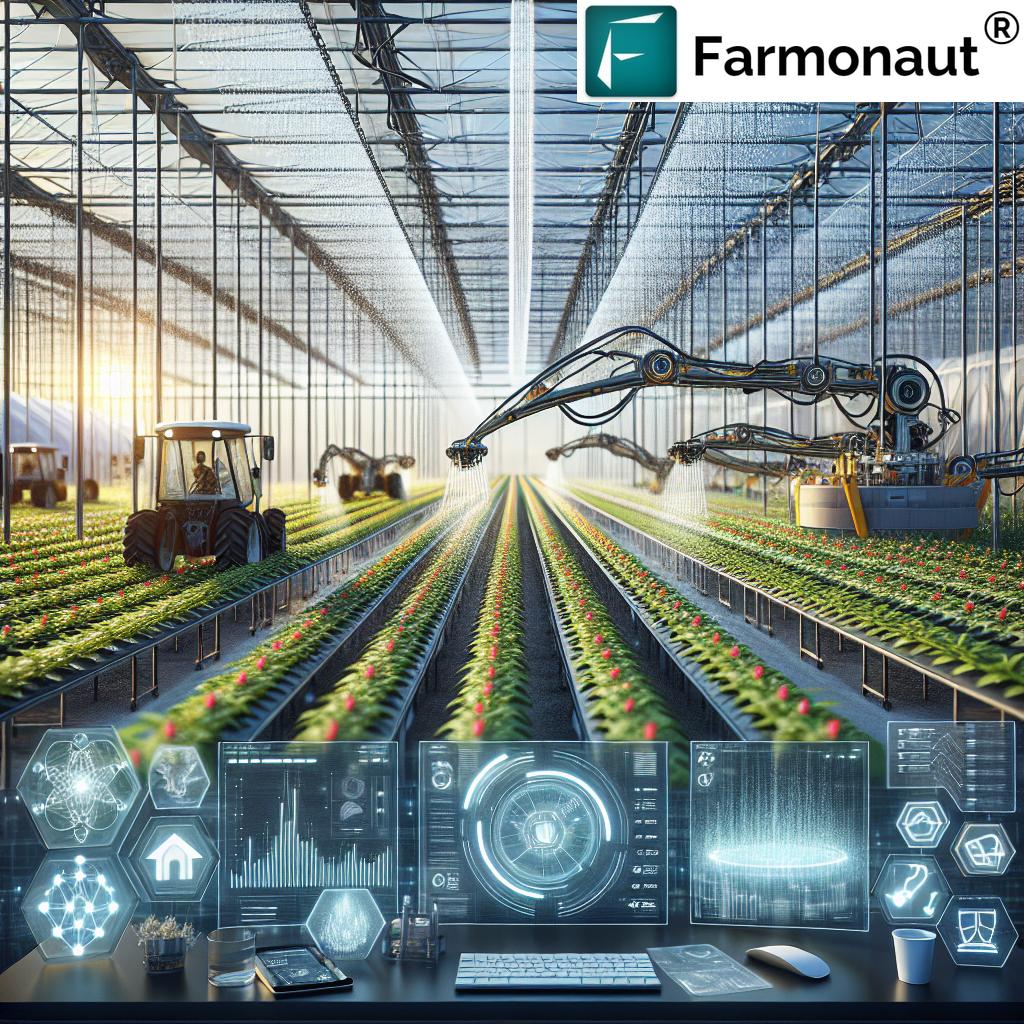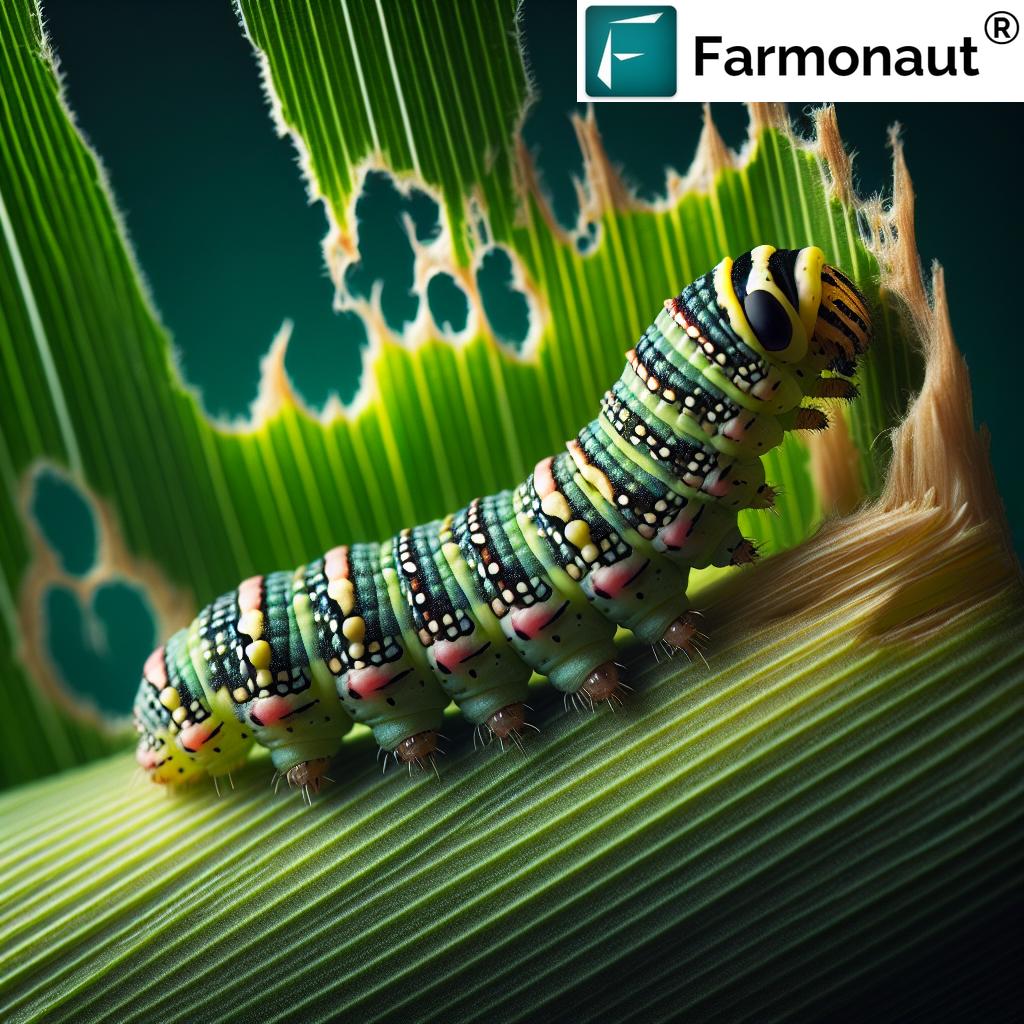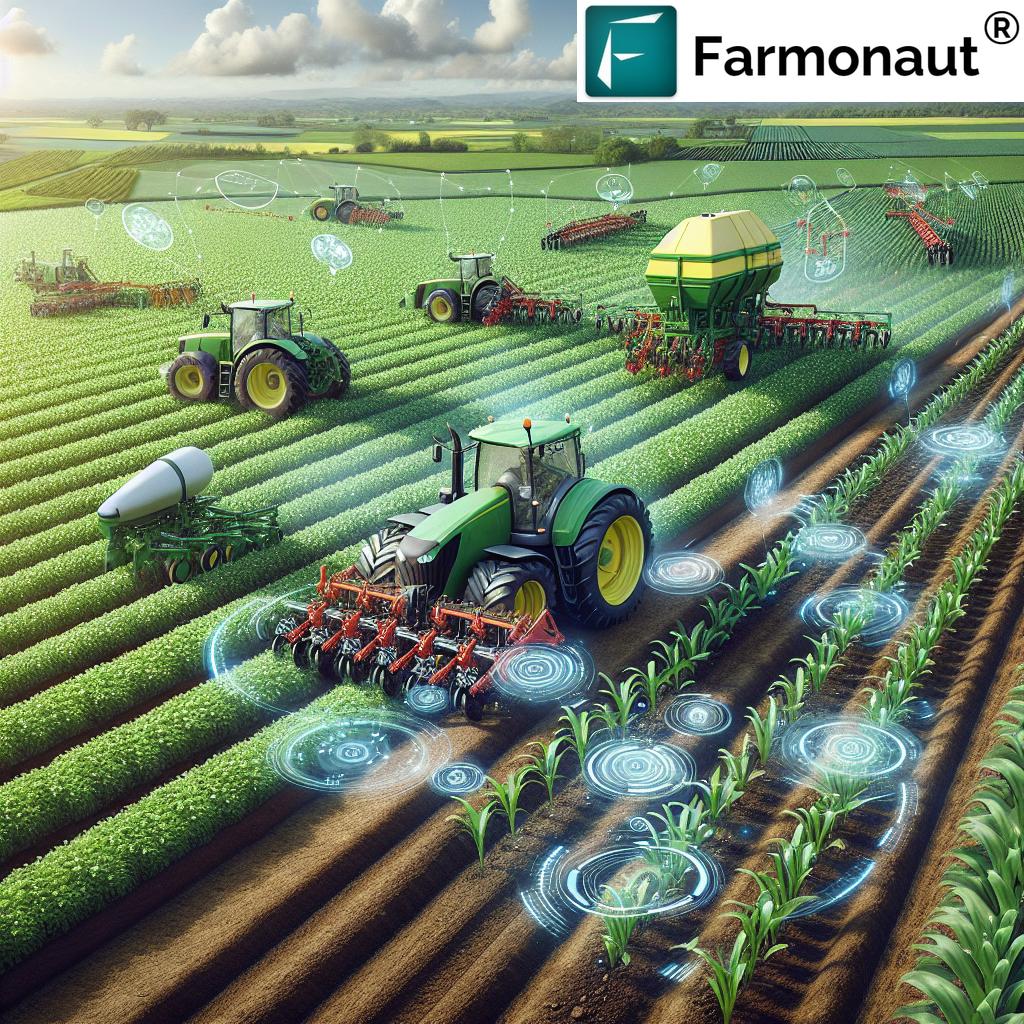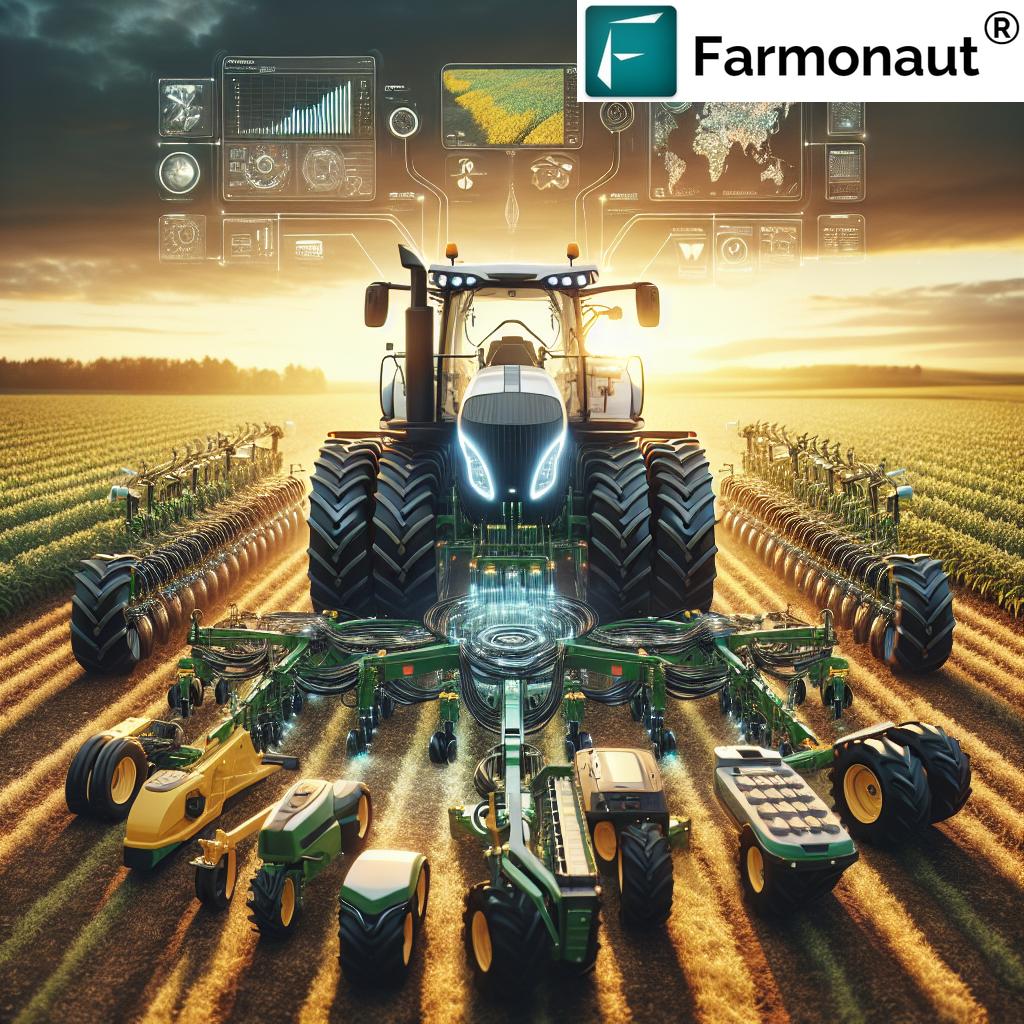Technology for Farmers: 7 Shocking Efficiency Hacks!
Meta Description: Discover 7 groundbreaking technology efficiency hacks—like precision agriculture, AI, and drones—helping farmers optimize yields and sustainability.
As farming faces mounting challenges—from labor shortages, rising costs, and unpredictable climates, to the urgent need for sustainability—technology is stepping in as both a safeguard and a catalyst for progress. Farmers, agribusinesses, and foresters now have access to a powerful suite of data-driven tools enabled by AI, drones, IoT, sensors, automation, and blockchain. These innovations are reshaping how we monitor fields, manage resources, optimize irrigation, and track supply chains.
In this comprehensive exploration, we’ll unveil the 7 most shocking efficiency hacks—pioneering technologies and best practices that are setting new benchmarks for productivity, sustainability, and profitability on farms worldwide. Whether you’re a progressive farmer eager to try precision planting or a forester adopting remote sensing for conservation, these hacks will inspire your next steps toward smart, future-ready farming.
Get ready to learn how key technologies—like precision agriculture, autonomous equipment, drones, robotics, smart irrigation, biotechnology, nanotechnology, blockchain, and controlled-environment agriculture—work together to solve real-world agricultural challenges.

Overview: 7 Shocking Efficiency Hacks for Farmers & Foresters
The world of smart farming technologies thrives on precision, data analytics, automation, and responsible use of natural resources. Here’s a quick look at how these seven hacks stack up in everyday practice:
- Precision Agriculture: GPS-guided, data-driven farming for optimal resource allocation and minimal waste.
- Autonomous Equipment: AI and self-driving tractors & harvesters boosting efficiency, reducing manual labor.
- Drones & Remote Sensing: Multispectral aerial imagery delivers rapid crop health assessments and targeted interventions.
- Robotics in Agriculture: Automated machines for planting, weeding, and harvesting—revolutionizing high-volume crop work.
- Smart Irrigation Systems: IoT sensors and automated watering conserve water and adapt to weather-driven crop needs.
- Biotechnology & Nanotechnology: Advanced seeds, crop protection, and nanosensors for soil and plant health diagnostics.
- Blockchain & Controlled-Environment Agriculture: Transparent supply chains and cultivation in greenhouses/vertical farms for resource-efficient yields.
1. Precision Agriculture: Data-Driven Farming Excellence
Precision agriculture is at the heart of today’s smart farming revolution. By combining satellite imagery, GPS, sensors, and advanced analytics, we can collect, interpret, and act on detailed field data with remarkable precision.
How Precision Agriculture Works
- Field Monitoring: Using satellites and Farmonaut’s platform, we can remotely monitor crop health, soil moisture, and growth patterns across every square meter of our fields.
- Data-Driven Decisions: Precision agriculture depends on agricultural data analytics—transforming satellite, drone, and sensor readings into actionable insights about nutrient levels, health risks, and optimal planting times.
- Resource Optimization: Whether applying fertilizers or pesticides, GPS-equipped machinery ensures that inputs go exactly where needed, minimizing environmental impact and reducing waste.
- Cost & Labor Savings: By automating many monitoring and management tasks, precision agriculture reduces manual labor and helps us focus resources on areas that yield the best return.
Farmonaut: Making Precision Agriculture Accessible
Farmonaut is a pioneer in democratizing precision agriculture. Its satellite-based monitoring delivers high-definition imagery and data analytics through easy-to-use web and mobile apps. Even small farms can now afford tools to monitor crop health, soil moisture, and weather patterns for improved yields and sustainability.
- Real-time Crop Health: Automated alerts and NDVI (Normalized Difference Vegetation Index) reports highlight stressed zones fast—so we can act before problems escalate.
- Informed Resource Management: Monitor irrigation, fertilization, and pest control from any device, reducing input costs and increasing efficiency.

2. Autonomous Equipment: Robots and Self-Driving Machinery
The integration of autonomous farming equipment is transforming how we approach planting, weeding, and harvesting tasks. By leveraging AI and machine learning, today’s tractors and robotic harvesters can navigate fields, avoid obstacles, and adapt to variable conditions without constant human intervention.
What Does Autonomous Equipment Do?
- Self-Driving Tractors: Use GPS and sensors to follow precise routes for planting, fertilizing, or spraying.
- Automated Harvesters: Adjust their speed and method based on crop maturity and field state, increasing yield and reducing waste.
- Robotic Planters & Weeders: Operate day and night, improving efficiency and helping to address labor shortages.
Though some concerns remain around initial investments and labor displacement, the value offered—especially in large-scale farms—is undeniable. With the right data management systems, we can monitor and control fleets of autonomous machines from a single dashboard, reducing repetitive work and focusing staff on areas where they are needed most.
Optimize Your Machinery Fleet: With Farmonaut’s fleet management tools, agribusinesses can track, manage, and optimize field equipment and vehicle usage to lower costs and maximize safety. This is especially valuable for enterprises running large operations or coordinating remote resources.
3. Drones & Remote Sensing in Farming: Eyes Above the Fields
Drones in agriculture and remote sensing in farming are rapidly becoming indispensable. By capturing high-resolution multispectral imagery, drones help us monitor crop health, assess irrigation systems, and detect early signs of pests or diseases—all from the sky, in a matter of minutes.
Key Benefits of Drones in Ag
- Timely Crop Assessment: Drones can cover large fields quickly, pinpointing stress zones, nutrient deficiencies, or pest outbreaks before they escalate.
- Precision Spraying/Fertilizing: Drone-mounted systems can deliver water, fertilizers, or pesticides only where they’re needed, minimizing environmental impact and input costs.
- Irrigation Monitoring: Flight imagery shows where water isn’t penetrating evenly, so we can adjust irrigation schedules.
- Sustainable Forestry Practices: In forestry, drones deliver essential data for forest health assessment, carbon tracking, and illegal activity detection.
Farmonaut’s Data-Driven Drone Insights
By integrating satellite and drone imagery into actionable analytics, Farmonaut enhances both on-the-spot farm decisions and sustainable agriculture solutions planning for the long haul. Our platform converts complex images into alert maps, crop health trends, and practical recommendations—usable from your phone or desktop.
Discover how our Agro Admin tools let you efficiently manage large-scale farm operations by leveraging centralized satellite data, remote sensing, and field staff coordination.
4. Robotics in Agriculture: Automating Tedious Tasks
Robotic systems are ushering in a new era of automated planting, weeding, harvesting, and sorting. Combining computer vision, AI, and precision movement, modern machines can distinguish crops from weeds, perform precision weeding without chemicals, and enhance farm efficiency.
The Power of Agricultural Robotics
- Precision Weeding: Machines like those inspired by FarmWise use AI to target and eliminate weeds mechanically, reducing pesticide use and environmental impact.
- Automated Planters: Innovations like FarmBot show even small-scale farmers how robotics can automate seed planting, watering, and monitoring at the plant level.
- 24/7 Operation: Robots don’t tire, providing consistent performance that reduces manual labor for repetitive and labor-intensive tasks.
Farmonaut’s data-driven insights enhance robotics’ impact by identifying where robotic interventions—such as precision weeding or planting—are most needed, ensuring resources go where they have the greatest effect.
5. Smart Irrigation Systems: Saving Water, Boosting Growth
Precision irrigation systems are vital for sustainable crop production as global water resources shrink. By employing IoT sensors, weather forecasting, and automated watering, we can monitor real-time soil moisture levels and adapt irrigation patterns to each crop’s needs.
How Do Smart Irrigation Systems Work?
- Soil Moisture Sensors: Continuously measure soil water levels and feed data to a central system, alerting us when fields require watering.
- Weather-Driven Automation: Irrigation controllers use forecasts and rainfall history to avoid over- or under-watering, conserving water and reducing costs.
- Remote Adjustments: We can adjust schedules and water flow on mobile apps—no more guessing or manual valve turning.
- Solar-Powered Systems: Automated pumps can run on renewable energy, further reducing both environmental impact and utility bills.
According to studies, smart farming technologies in irrigation can cut water use by up to 50%—making them a top choice for farmers in drought-prone regions and for those committed to sustainable agriculture solutions.
Learn how Farmonaut’s Jeevn AI Advisory System combines satellite soil data and weather analytics to provide personalized irrigation and crop advisory for optimized yields and reduced resource usage.
6. Biotechnology & Nanotechnology: Future-Proofing Our Fields
Biotechnology: Supercharged Seeds & Crop Protection
- Genetic Engineering: By tweaking plant genetics, we develop crops that resist droughts, pests, and diseases—helping us adapt to climate change and increase yields.
- Bio-Fertilizers and Biostimulants: These biotech products improve soil health, enhance nutrient uptake, and boost plant resilience without the environmental downsides of heavy chemical use.
Nanotechnology in Agriculture: Tiny Sensors, Huge Impact
- Nanosensors: Embedded in soils or plants, these can monitor nutrient levels, pH, water availability, and the presence of toxic substances in real time.
- Targeted Application: Nanotechnology allows fertilizers and pesticides to be delivered with pinpoint accuracy, reducing waste and environmental impact.
Farmonaut’s carbon footprinting tools (see details) enable us to track environmental gains from adopting biotech and nanotech solutions, helping comply with modern sustainability metrics.
Comparison Table: 7 Precision Agriculture Technologies and Their Efficiency Gains
| Technology Name | Primary Function | Key Features | Estimated Yield Increase (%) | Estimated Input Reduction (%) | Impact on Sustainability |
|---|---|---|---|---|---|
| Precision Agriculture | Site-specific management | Satellite imagery, GPS, Data Analytics, Sensors | 20-30% | 10-20% | Less Pollution, Healthier Soils |
| Autonomous Equipment | Automated field operations | AI, Machine Learning, Robotics | 10-20% | 15-25% | Reduced Emissions |
| Drones & Remote Sensing | High-res crop monitoring | Aerial Imagery, Analytics, Automation | 15-22% | 10-30% | Water & Chemical Savings |
| Robotics in Agriculture | Automated planting, weeding, harvesting | Computer Vision, AI, Precision Control | 15-25% | 20-35% | Reduced Chemical Use |
| Smart Irrigation Systems | Water optimization | IoT Sensors, Weather Data, Automation | 12-17% | 30-50% | Drastic Water Savings |
| Biotechnology / Nanotechnology | Resilience, diagnostics | Genetics, Biostimulants, Nanosensors | 10-18% | 10-25% | Reduced CO₂, Healthier Ecosystems |
| Blockchain & Controlled Environments | Supply chain & closed-system growing | Blockchain, LED Lighting, Automation | 10-15% | 20-30% | Traceability, Waste Reduction |
7. Blockchain & Controlled-Environment Agriculture: Securing and Sustaining Food Chains
Blockchain in Agricultural Supply Chain
- Traceability: Every transaction—from seed to shelf—can be traced on an immutable, decentralized ledger, verifying food origin, certification, and safety.
- Fraud Resistance: Blockchain protects intellectual property, prevents counterfeit products, and secures the value chain.
- Consumer Trust: Buyers and regulators get access to the full history and handling records for fresh, safe, and ethically-sourced produce.
Explore Farmonaut’s Blockchain Traceability Solutions to elevate your supply chain’s transparency and authenticity. With blockchain, we connect every farm, processor, and end-user for robust accountability.
Controlled-Environment Agriculture (CEA)
- Vertical & Hydroponic Farming: Grow more with less—year-round, indoors, and with minimal water or land footprint.
- Climate Control: Adjust temperature, humidity, and lighting to optimize nutrient uptake and growth, regardless of outdoor conditions.
- Pest/Disease Management: Closed environments naturally reduce losses and the need for chemical controls.
How Farmonaut Empowers Modern Agriculture Across Every Hack
Farmonaut stands apart as a central force in delivering precision agricultural data analytics, resource management, remote field monitoring, AI-powered crop and irrigation advisory, supply chain transparency, and sustainability insights. Here’s a quick breakdown of solution highlights:
- Satellite Crop Health Monitoring: Access NDVI, EVI, Soil Moisture, and more directly on your devices; spot problems before they damage yields.
- Jeevn AI Advisory: Get personalized recommendations on nutrition, irrigation, and pest control—driven by real-time satellite analytics and weather patterns, enhancing productivity for all farm sizes.
- Carbon Footprinting: Monitor your environmental impact and emissions to align with sustainable agriculture practices and certifications.
- Blockchain Traceability: Build trust with buyers and consumers by securing your produce’s journey from farm to table.
- Fleet Management: Manage autonomous and traditional machinery and logistics to lower operational costs.
- Satellite-Verified Crop Loans and Insurance: Access financial products and reduce fraud risk using remote field verification.
- Farmonaut Open API & Developer Docs: Integrate world-class agricultural monitoring and weather data into your own systems, apps, or platforms.
Farmonaut Subscriptions: Affordable, Scalable, Global
Farmonaut operates a flexible subscription model to fit smallholder farmers, agribusinesses, research institutions, and governments alike. Our web, Android, iOS apps, and API access make precision agriculture accessible globally.
FAQ: Technology in Farming and Forestry
What is precision agriculture and why does it matter?
Precision agriculture uses data-driven technology solutions—like satellite imagery, sensors, analytics, and AI—to optimize the use of resources (water, fertilizer, pesticides), maximize yields, minimize waste, and reduce environmental impact. It forms the backbone of smart farming technologies.
How do autonomous farming equipment and robotics reduce labor?
Autonomous machinery (tractors, robot harvesters, smart weeders) use GPS, sensors, and AI in crop management to perform repetitive and strenuous field tasks. This allows us to scale up operations while reducing reliance on manual labor, increasing productivity, and saving costs.
Can drones in agriculture replace field scouting?
Drones and remote sensing cannot replace every form of manual inspection, but they greatly reduce the need for routine scouting by quickly revealing crop health issues, irrigation failures, or pest outbreaks over vast areas. This means faster, more informed interventions and healthier crops.
How does smart irrigation save water?
Smart systems use soil and weather data to adjust watering—delivering water only where and when it’s needed.
This cuts waste, reduces costs, and can improve crop health by preventing over-irrigation.
What are the main challenges for adopting these agricultural technologies?
- High initial investment for autonomous equipment and robotics
- Need for technical knowledge and training
- Data privacy and security concerns
- Inequitable access for smallholder farmers in some regions
- Potential for short-term job displacement, requiring workforce reskilling
How does blockchain improve supply chain transparency in agriculture?
Blockchain creates a transparent, tamper-proof record of every transaction in the supply chain. This ensures the traceability of products, enhances food safety, prevents fraud, and boosts consumer trust.
Can Farmonaut be used by individual farmers as well as large businesses?
Yes! Farmonaut is designed to serve individual farmers, cooperatives, agribusinesses, researchers, and governments. Its affordable, modular solutions adapt to farms of any scale, making precision agriculture accessible worldwide.
Conclusion: Building The Sustainable Farm of Tomorrow
The rapid progress in agricultural technology is nothing short of revolutionary. By integrating precision agriculture, AI, remote sensing, autonomous machinery, smart irrigation, biotechnology, and blockchain, we are equipping farmers and foresters everywhere to tackle their most pressing challenges: from labor shortages and rising costs, to sustainability and climate resilience.
The path forward is data-driven, transparent, and collaborative. As platforms like Farmonaut continue to lower technological barriers and offer affordable, API-accessible, and actionable farm intelligence, every operator—regardless of size or sector—gains the ability to optimize resources, increase yields, and protect the environment.
By embracing these seven shocking efficiency hacks, we are not just improving productivity—we’re building the foundation for a more secure, resilient, and sustainable food system for generations to come.












